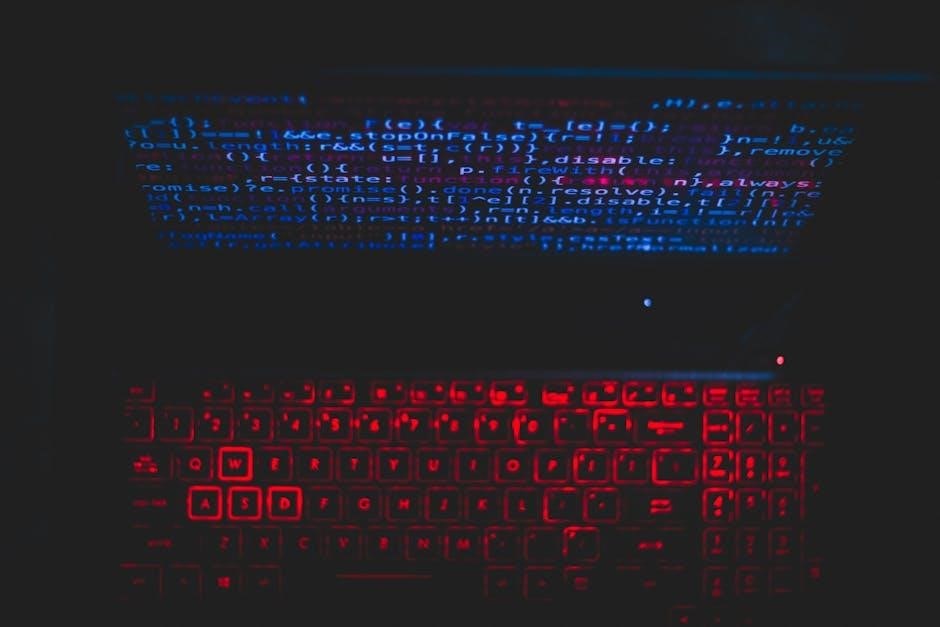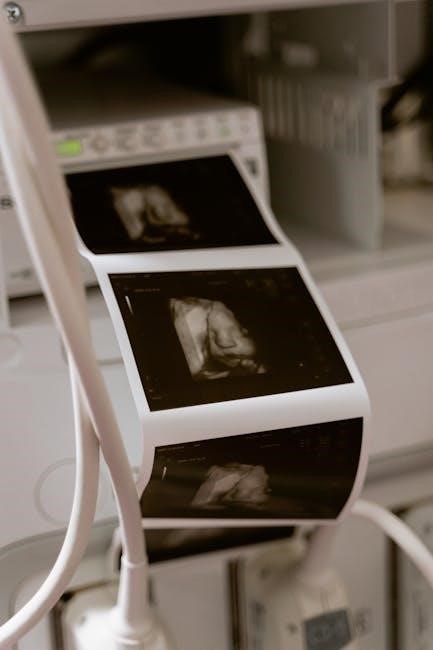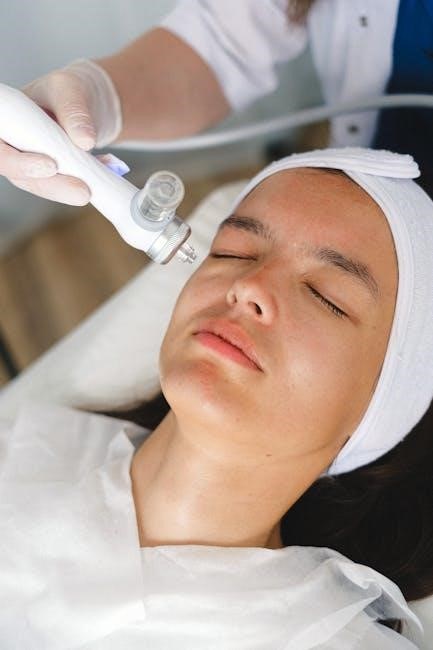CPT (Current Procedural Terminology) codes are standardized codes used for medical billing and insurance purposes. They describe specific medical, surgical, and diagnostic procedures, ensuring consistency and accuracy in billing.
1.1 What Are CPT Codes?
CPT (Current Procedural Terminology) codes are standardized codes used to describe medical, surgical, and diagnostic procedures. They are developed and maintained by the American Medical Association (AMA) to ensure accurate billing and documentation. These codes provide a uniform language for reporting medical services, facilitating consistent communication between healthcare providers, insurers, and patients. CPT codes are essential for billing purposes, as they help categorize procedures like ultrasound-guided thyroid biopsies, ensuring proper reimbursement and documentation.
1.2 Importance of CPT Codes in Medical Billing
CPT codes play a vital role in medical billing by ensuring accurate and consistent documentation of procedures. They standardize the reporting of services, facilitating proper reimbursement and reducing billing errors. By using specific codes like 76942 for ultrasound guidance and 10005 for fine needle aspiration, healthcare providers can communicate clearly with insurers, ensuring timely payments. CPT codes also promote transparency and compliance with regulatory requirements, making them indispensable for efficient medical billing processes and data tracking in healthcare systems.

Overview of Ultrasound-Guided Thyroid Biopsy
Ultrasound-guided thyroid biopsy uses imaging to precisely locate nodules, ensuring accurate needle placement for tissue sampling. This minimally invasive procedure is essential for diagnosing thyroid abnormalities.
2.1 What Is an Ultrasound-Guided Thyroid Biopsy?
An ultrasound-guided thyroid biopsy is a minimally invasive procedure where ultrasound imaging directs the insertion of a fine needle into thyroid nodules to collect tissue samples for pathological examination. This technique enhances precision, reducing complications and ensuring accurate diagnosis. It is commonly used to evaluate suspicious thyroid lesions, providing real-time visualization for targeted sampling. The procedure is essential for distinguishing benign from malignant nodules, aiding in timely treatment planning.
2.2 Indications for the Procedure
The ultrasound-guided thyroid biopsy is primarily indicated for evaluating suspicious thyroid nodules, diagnosing malignancy, and assessing nodules with indeterminate cytology. It is also used for nodules that are symptomatic, rapidly growing, or suspected of harboring metastatic disease. The procedure is particularly beneficial for nodules that are difficult to palpate or require precise needle placement. Ultrasound guidance enhances accuracy, reducing the risk of complications and ensuring optimal tissue sampling for pathological analysis.
2.3 Benefits of Ultrasound Guidance
Ultrasound guidance enhances the accuracy of thyroid biopsy by providing real-time visualization of the needle placement, reducing blind spots. It minimizes complications by avoiding vital structures and improves patient safety. This method is particularly advantageous for nodules that are difficult to palpate or located in challenging anatomical areas. Ultrasound guidance also reduces the need for repeat procedures, ensuring efficient and reliable tissue sampling. Overall, it improves diagnostic confidence and contributes to better patient outcomes.

CPT Codes for Ultrasound-Guided Thyroid Biopsy
CPT codes for ultrasound-guided thyroid biopsy include 76942 for ultrasonic guidance, 10005 for the first lesion biopsy, and 10006 for additional lesions. These codes ensure accurate billing.
3.1 CPT Code 76942: Ultrasonic Guidance for Needle Placement
CPT code 76942 is used for ultrasonic guidance during needle placement in procedures like thyroid biopsy. It covers real-time imaging to ensure precise needle positioning, reducing complications. This code is billed separately from the biopsy procedure itself, as it represents the technical aspect of ultrasound guidance. Proper documentation is essential to justify its use, ensuring accurate reimbursement. It is commonly used in thyroid nodule biopsies to enhance procedure safety and effectiveness, making it a critical component in medical billing for such services.
3.2 CPT Code 10005: Fine Needle Aspiration Biopsy, First Lesion
CPT code 10005 is used for reporting a fine needle aspiration biopsy of the first thyroid lesion. This code includes the ultrasound guidance required for precise needle placement. It is typically billed when performing a biopsy on a single nodule and represents the primary procedure code for this service. The code applies to the initial lesion only, with additional lesions requiring a separate code. Proper documentation of the procedure and imaging guidance is essential for accurate billing and reimbursement.
3.3 CPT Code 10006: Fine Needle Aspiration Biopsy, Each Additional Lesion
CPT code 10006 is used for reporting fine needle aspiration biopsy of each additional thyroid lesion beyond the first. This code is billed separately for every extra lesion sampled during the same procedure. It includes ultrasound guidance for precise needle placement, similar to code 10005. When multiple nodules are biopsied, code 10006 is appended for each additional lesion, ensuring accurate billing for the extended service. Proper documentation of each lesion is essential for correct reimbursement.

Billing and Coding Guidelines
Proper coding requires accurate documentation of procedures and adherence to guidelines to ensure correct billing and reimbursement for ultrasound-guided thyroid biopsy services, avoiding errors and audits.
4.1 Proper Use of CPT Codes for Ultrasound-Guided Biopsy
Proper use of CPT codes for ultrasound-guided thyroid biopsy involves accurate selection and sequencing of codes like 76942 for ultrasound guidance and 10005 for the first lesion biopsy. Always pair 76942 with the primary biopsy code to reflect the use of ultrasound. For multiple lesions, 10006 is added for each additional lesion. Ensure documentation clearly states the number of lesions and the use of ultrasound to avoid billing errors. Accurate coding ensures proper reimbursement and compliance with medical billing standards.
4.2 Billing for Multiple Lesions
Billing for multiple lesions in ultrasound-guided thyroid biopsy requires precise coding. Use CPT 10005 for the first lesion and 10006 for each additional lesion. Ensure 76942 is billed once per session, regardless of the number of lesions, as it represents the ultrasound guidance. Accurate documentation of each lesion biopsied is crucial to avoid overreporting. Always verify the medical record for the exact number of lesions sampled to ensure correct coding and billing practices.
4.3 Insurance Coverage and Reimbursement
Insurance coverage for ultrasound-guided thyroid biopsy varies by payer but typically covers CPT codes 76942, 10005, and 10006 when deemed medically necessary. Proper documentation is essential to ensure reimbursement, as payers require evidence of the procedure’s necessity. Submit claims with accurate CPT codes and modifiers to avoid denials. Stay updated on payer-specific guidelines, as coverage and reimbursement rates may differ. Regularly verify insurance policies to ensure compliance and maximize reimbursement for these procedures.

Clinical Scenarios for CPT Code Usage
CPT codes for ultrasound-guided thyroid biopsy apply in various clinical contexts, including single or multiple nodules and diagnostic or therapeutic procedures, ensuring accurate billing for each scenario.
5.1 Single Thyroid Nodule Biopsy
A single thyroid nodule biopsy involves using CPT code 10005 for the fine needle aspiration of the first lesion, with ultrasound guidance coded separately as 76942. This ensures accurate billing for the procedure, capturing both the biopsy and imaging guidance. Proper documentation is essential to reflect the use of ultrasound, supporting the billing process. This scenario is common in diagnostic evaluations of thyroid nodules, where precise coding is critical for reimbursement and compliance with medical billing standards.
5.2 Multiple Thyroid Nodules Biopsy
For multiple thyroid nodules, CPT code 10005 is used for the first lesion’s fine needle aspiration biopsy. Each additional lesion is billed using CPT code 10006. Ultrasound guidance for each nodule is separately reported with CPT code 76942. Proper documentation must include the number of lesions and the use of ultrasound for each to ensure accurate billing. This approach prevents underreporting and ensures compliance with coding guidelines for multiple nodule procedures.
5.3 Coding for Diagnostic vs. Therapeutic Procedures
CPT coding for ultrasound-guided thyroid biopsy differs slightly between diagnostic and therapeutic contexts. Diagnostic biopsies, aimed at assessing nodules, primarily use CPT codes 10005 and 10006 for fine needle aspiration, with 76942 for ultrasound guidance. Therapeutic procedures, such as drainage or larger tissue sampling, may require additional codes. Documentation must clarify the procedure’s purpose and whether therapeutic interventions were performed alongside biopsy. Accurate coding ensures proper reimbursement and distinguishes between diagnostic and therapeutic intents.

Documentation Requirements
Accurate documentation is crucial for ultrasound-guided thyroid biopsy coding. Include patient demographics, procedure details, ultrasound guidance use, number of samples, and final diagnosis correlation with imaging results.
6.1 Key Elements to Include in Medical Documentation
Medical documentation for ultrasound-guided thyroid biopsy must include patient demographics, procedure details, and imaging results. Document the use of ultrasound guidance, number of samples collected, and lesion characteristics. Include the final diagnosis and correlate findings with imaging results. Note any complications or deviations from standard procedure. Accurate documentation ensures compliance with coding guidelines and supports accurate billing. Maintain clear, concise records to facilitate proper CPT code assignment and reimbursement.
6.2 Role of Ultrasound in Procedure Documentation
Ultrasound plays a critical role in documenting thyroid biopsy procedures by providing real-time imaging guidance. Documentation should include ultrasound images capturing the targeted nodule and needle placement. Record the use of ultrasound to guide the biopsy, ensuring accuracy and reducing complications. Note any challenges during the procedure, such as nodule depth or patient movement. Accurate ultrasound documentation supports CPT code 76942 for ultrasonic guidance, ensuring proper reimbursement and compliance with billing standards.

Common Coding Errors and Pitfalls
Common coding errors include incorrect use of CPT codes, such as mixing diagnostic and therapeutic codes, and failing to document ultrasound guidance properly.
7.1 Incorrect Use of CPT Codes
One common error is using CPT codes incorrectly, such as coding for ultrasound guidance without the corresponding primary procedure code. For example, using CPT 76942 without pairing it with the appropriate biopsy code (e.g., 10005 or 10006) can lead to denied claims. Another mistake is misreporting the number of lesions, which affects the selection of 10005 (first lesion) or 10006 (additional lesions). Additionally, failing to use modifier -26 for imaging guidance when required can result in payment issues. Proper code pairing and sequencing are essential to avoid reimbursement delays or denials.
7.2 Underreporting or Overreporting Services
Underreporting or overreporting services can lead to billing inaccuracies and compliance issues. Underreporting may occur when essential codes, like 76942 for ultrasound guidance, are omitted, resulting in lost revenue. Overreporting involves billing for services not performed, such as coding for additional lesions (10006) when only one was biopsied. Both practices can trigger audits, penalties, or payment denials. Accurate documentation and consistent code use are critical to ensure proper reimbursement and compliance with coding guidelines.

Best Practices for Coding Ultrasound-Guided Thyroid Biopsy
Adhere to coding guidelines, document procedures accurately, and use appropriate CPT codes for biopsy and ultrasound guidance to ensure compliance and proper reimbursement.
8.1 Staying Updated on Coding Guidelines
Regularly reviewing updates to CPT codes and guidelines ensures accurate billing for ultrasound-guided thyroid biopsies. New codes, such as 10005 and 10006, may be introduced, requiring prompt implementation. Staying informed through official sources like the AMA or CMS helps avoid coding errors and ensures compliance with reimbursement policies. Annual updates and training are essential to maintain proficiency and adapt to changes in medical billing standards. Proper documentation and adherence to coding conventions are critical for successful claims processing and avoiding audits or penalties.
8.2 Using Coding Manuals and Resources
Coding manuals and resources are essential tools for accurate billing of ultrasound-guided thyroid biopsies. The CPT coding manual provides official guidelines for selecting codes like 76942, 10005, and 10006. Supplemental resources, such as AMA and CMS updates, offer detailed instructions and examples. Regularly consulting these materials ensures compliance with billing rules and avoids errors. Proper documentation and adherence to coding conventions are critical for successful claims processing and avoiding audits or penalties. Staying informed through official sources like the AMA or CMS helps avoid coding errors and ensures compliance with reimbursement policies. Annual updates and training are essential to maintain proficiency and adapt to changes in medical billing standards. Proper documentation and adherence to coding conventions are critical for successful claims processing and avoiding audits or penalties.

Case Study: Appropriate Use of CPT Codes
A patient with two thyroid nodules underwent an ultrasound-guided biopsy. CPT codes 76942 for guidance, 10005 for the first lesion, and 10006 for the second were accurately reported, ensuring proper billing.
9.1 Example of Correct Coding for a Thyroid Biopsy Procedure
A patient undergoes an ultrasound-guided thyroid biopsy with two nodules. The correct coding includes CPT 76942 for ultrasound guidance, CPT 10005 for the first lesion, and CPT 10006 for the second lesion. This ensures accurate billing for both the imaging guidance and the biopsy procedure itself, reflecting the distinct services provided. Proper coding prevents claim denials and ensures appropriate reimbursement for the procedure.
Accurate coding for ultrasound-guided thyroid biopsy procedures is essential for proper billing and reimbursement. Using CPT codes like 76942, 10005, and 10006 ensures clarity and compliance with medical billing standards. Proper documentation and adherence to guidelines prevent errors and optimize patient care. Staying updated on coding changes and best practices is crucial for healthcare providers and billers to maintain efficiency and accuracy in their workflows.
